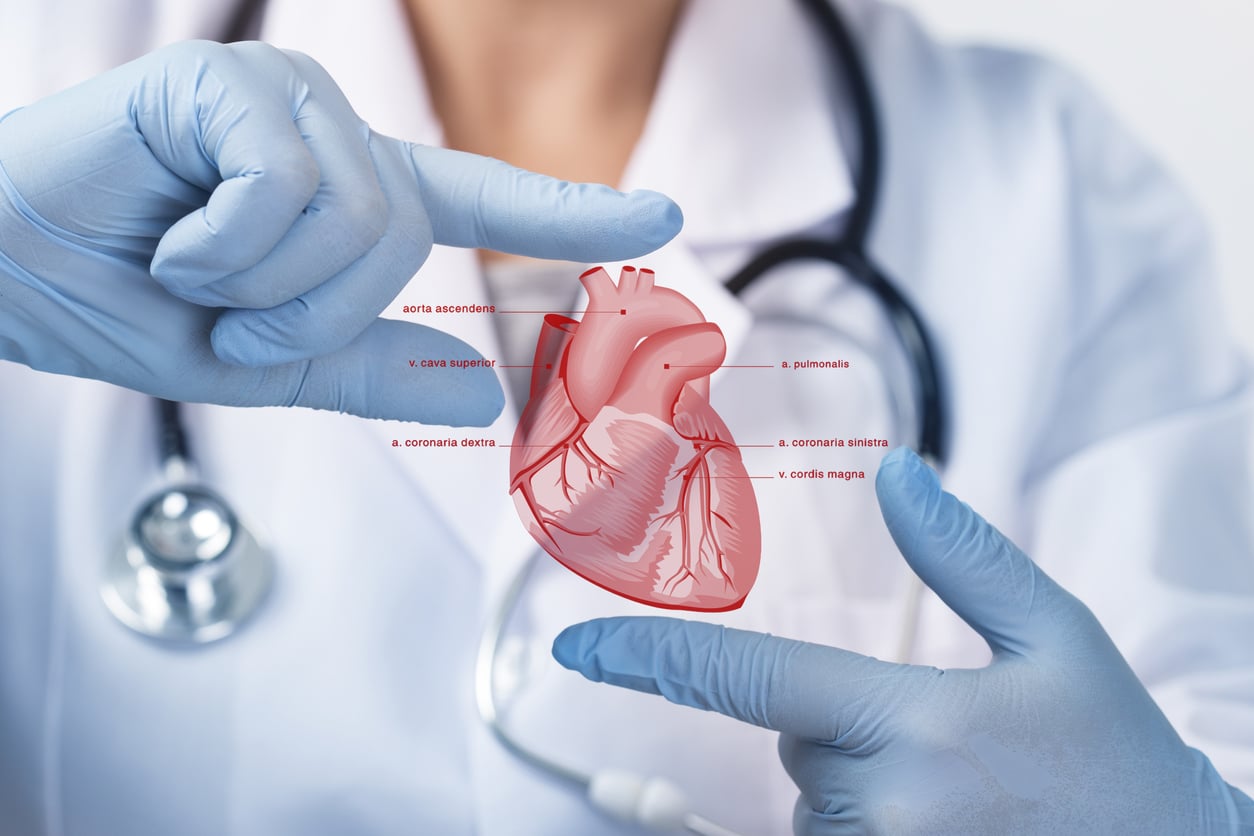Searching for a Cardiologist near me? What to consider before booking
Searching for a Cardiologist near me? What to consider before booking
Blog Article
Recognizing the Significance of Cardiology in Modern Health Care Providers
Cardiology plays an essential function in contemporary healthcare, especially as heart problem proceeds to be the leading root cause of mortality worldwide. Developments in diagnostics and therapy have transformed individual care, enabling earlier interventions and enhanced end results. Additionally, the shift in the direction of preventative cardiology equips individuals to manage their health proactively. As innovation remains to advance, the combination of innovative services may additionally redefine cardiology's effect on public health and wellness, prompting a more detailed evaluation of emerging patterns and their ramifications.
The Occurrence of Heart Condition and Its Effect On Public Health
Heart disease continues to be the leading cause of fatality worldwide, its effect prolongs far past private patients to influence public wellness systems and economic situations. The high prevalence of cardiovascular disease puts a considerable stress on health care resources, necessitating enhanced financing for treatment, rehab, and prevention programs. Public health and wellness efforts need to resolve risk aspects such as obesity, cigarette smoking, and inactive lifestyles, which contribute significantly to the climbing incidence of heart conditions.Moreover, the economic burden related to heart problem is tremendous, incorporating not only straight clinical prices yet likewise indirect expenses associated to lost efficiency and premature mortality. Areas deal with challenges in taking care of these prices, typically causing variations in healthcare gain access to and results. As the population ages and lifestyle-related threats continue to escalate, the necessity for effective cardiology interventions comes to be paramount. Addressing heart illness is not only a matter of specific health but also a vital public health and wellness priority.
Breakthroughs in Cardiac Diagnostics and Imaging Techniques
Recent developments in cardiac diagnostics and imaging strategies have changed the area of cardiology, boosting the capability to identify and keep track of heart problem. Strategies such as cardiac MRI, CT angiography, and echocardiography have actually come to be progressively advanced, providing comprehensive pictures of heart structures and functions. These techniques enable the very early identification of problems like coronary artery illness, cardiac arrest, and valvular disorders.Moreover, improvements in non-invasive diagnostics, such as wearable innovation and remote monitoring tools, have empowered people and doctor. These tools assist in real-time monitoring of heart rhythms and various other essential indications, bring about prompt interventions. In addition, expert system is being integrated right into imaging evaluation, improving precision and effectiveness in medical diagnosis.
Advancements in Treatment Options for Heart Issues
Recent innovations in cardiology have actually resulted in significant advancements in treatment options for heart problems. These include sophisticated surgical techniques that boost step-by-step outcomes and arising drugs that supply new methods for treatment. As the field evolves, these technologies play a vital function in improving individual care and results.
Advanced Surgical Techniques
Developments in medical techniques have actually transformed the landscape of cardiology, offering new hope for patients with heart disease. Minimally invasive procedures, such as catheter-based interventions, have substantially minimized healing times and medical facility stays. Strategies like robotic-assisted surgical treatment improve precision, allowing specialists to browse complicated anatomical structures with higher precision. Advancements in imaging technology promote real-time visualization during procedures, boosting outcomes. Transcatheter aortic valve substitute (TAVR) exemplifies an innovation in treating aortic constriction, allowing shutoff replacement without open-heart surgery. In addition, hybrid strategies that integrate catheter-based and medical approaches offer tailored solutions for numerous heart issues. These advanced surgical techniques not just improve individual safety and security however additionally broaden therapy choices, underscoring the vital role of development in modern cardiology techniques.
Emerging Medications and Therapies
As the landscape of cardiology remains to evolve, emerging medicines and treatments play a critical function in boosting treatment choices for heart conditions. Innovations such as unique anticoagulants and progressed lipid-lowering agents have actually changed the management of cardio diseases, considerably lowering individual morbidity and mortality. Furthermore, the advancement of genetics therapies and regenerative medication provides appealing avenues for dealing with problems previously deemed incurable. Medical tests are continually revealing the efficiency of these therapies, pressing the limits of typical treatments. Moreover, the integration of digital health modern technologies promotes customized medicine, permitting customized therapy plans based upon hereditary and lifestyle elements. Collectively, these improvements emphasize the vibrant nature of cardiology, improving person outcomes and redefining standards of treatment in modern-day healthcare.
The Duty of Preventive Cardiology in Client Treatment
Precautionary cardiology plays a crucial duty in client care by focusing on the recognition of risk aspects that add to heart illness. Via way of life adjustment approaches and early discovery techniques, doctor can properly minimize the incidence of cardiovascular occasions - Cardiology care. This positive strategy not only improves individual outcomes but likewise advertises long-term health
Risk Factor Identification
While cardio conditions continue to be a leading root cause of morbidity and mortality worldwide, efficient threat element recognition functions as a foundation of preventative cardiology. Identifying risk factors such as high blood pressure, family, diabetes, and hyperlipidemia history is crucial for early treatment. Health care experts make use of numerous evaluating approaches to examine these variables, enabling tailored preventive steps. Additionally, recognizing a person's way of life options, such as cigarette smoking and physical lack of exercise, better educates threat evaluations. This comprehensive assessment enables clinicians to establish tailored treatment strategies targeted at mitigating risks. By focusing on risk variable identification, health care systems can improve patient results and reduce the total concern of heart diseases, ultimately contributing to improved public wellness methods and source appropriation.
Lifestyle Adjustment Strategies
A wide range of studies highlights the vital role of way of living alteration strategies in minimizing heart disease danger. These methods include dietary adjustments, increased exercise, smoking cigarettes cessation, and weight management. By taking on a heart-healthy diet rich in fruits, vegetables, whole grains, and lean healthy proteins, people can lower cholesterol degrees and blood stress. Regular exercise reinforces the heart and improves general cardiovascular health. In addition, moved here giving up cigarette smoking considerably lowers the danger of cardiovascular disease and improves healing prices for those with current conditions. Weight administration even more adds to cardio health by mitigating other risk elements such as diabetic issues and high blood pressure. Applying these lifestyle alters not just advertises specific health but likewise acts as a keystone of precautionary cardiology in patient care.
Early Discovery Methods
Way of life modifications considerably add to reducing heart disease dangers, but they are most reliable when coupled with very early detection strategies. Preventative cardiology emphasizes the importance of determining potential heart concerns prior to they rise right into serious conditions. Strategies such as high blood pressure tracking, cholesterol screening, and advanced imaging innovations like echocardiograms play essential functions in examining cardiovascular health and wellness. Biomarkers and genetic testing also improve the accuracy of very early discovery, enabling tailored preventative techniques. Routine heart danger examinations equip doctor to step in proactively, possibly preventing cardiovascular disease and strokes (Cardiologist near me). By integrating these very early detection methods right into regular treatment, clients can profit from timely way of living treatments and targeted treatments, eventually enhancing and enhancing results lifestyle
Integrating Technology Into Cardiology Practices
As improvements in innovation remain to improve numerous fields, the assimilation of cutting-edge tools and systems right into cardiology practices has actually come to be crucial for boosting individual treatment and results. Telemedicine systems allow cardiologists to keep track of individuals from another location, boosting access to care while decreasing the concern on health care facilities. Wearable devices, such as smartwatches, make it possible for constant heart price monitoring, signaling both physicians and patients to possible issues in real-time. Furthermore, artificial knowledge (AI) is being used to assess substantial amounts of heart information, assisting in early diagnosis and individualized treatment strategies. Advanced imaging methods, including 3D echocardiography, enhance visualization of heart structures, leading to a lot more accurate interventions. Electronic health and wellness documents (EHRs) streamline person details monitoring, ensuring that cardiologists have instant accessibility to critical data. Together, these technological developments are changing cardiology, advertising proactive monitoring and improved health results for individuals with cardio conditions.
The Value of Person Education and Engagement
Client education and engagement play a pivotal duty in the monitoring of cardio wellness. By outfitting patients with knowledge about their problems, therapy choices, and way of living changes, doctor encourage people to take an active role in their treatment. This aggressive technique can result in enhanced adherence to recommended drugs, dietary changes, and exercise regimens, inevitably reducing the threat of complications.Engagement additionally fosters a solid patient-provider relationship, encouraging open communication and trust. When clients feel educated and involved, they are more most likely to voice problems and ask questions, which can result in better medical outcomes. In addition, educational sources, such as workshops or electronic platforms, can improve understanding and advertise self-management techniques. Overall, prioritizing person education and learning and engagement is important for enhancing cardiovascular health and wellness, boosting lifestyle, and minimizing healthcare prices linked with cardiovascular conditions.
Future Patterns in Cardiology and Their Prospective Influence

Often Asked Questions
What Lifestyle Modifications Can Reduce Heart Illness Danger?
The current concern addresses lifestyle changes that can greatly reduce cardiovascular disease risk. Cardiology. Embracing a well balanced diet, taking part in routine exercise, preserving a healthy and balanced weight, managing tension, and avoiding tobacco can notably improve cardiovascular wellness
Exactly How Can I Recognize Early Signs of Heart Troubles?
Identifying very early indications important source of heart troubles entails tracking signs and symptoms such as breast discomfort, shortness of breath, fatigue, and irregular heart beat. Prompt understanding of these indicators can prompt required Click This Link clinical analysis and intervention for much better end results.
What Are the Differences Between Cardiologists and Heart Surgeons?
The distinctions between cardiologists and cardiac cosmetic surgeons depend on their duties; cardiologists largely take care of and detect heart disease with non-invasive methods, while heart cosmetic surgeons carry out medical procedures to correct architectural heart problems. Each plays an essential, unique function.

How Commonly Should I Obtain My Heart Health And Wellness Checked?
The regularity of heart health checks differs based upon individual threat factors. Normally, grownups should undertake assessments each to 2 years, while those with present problems might need even more frequent evaluations as encouraged by medical care specialists.
What Duty Does Genes Play in Cardiovascular Disease Risk?
Genetics substantially influences cardiovascular disease threat, with familial patterns suggesting inherited problems. Specific genes can incline people to hypertension, cholesterol problems, and various other cardio issues, highlighting the importance of genetic screening in examining heart health and wellness. Heart condition remains the leading reason of fatality worldwide, its impact expands much past specific people to affect public health and wellness systems and economic situations. Public health and wellness initiatives should deal with risk variables such as weight problems, smoking cigarettes, and less active way of livings, which contribute greatly to the increasing incidence of heart conditions.Moreover, the financial problem connected with heart illness is enormous, encompassing not just direct clinical costs yet also indirect expenses associated to shed productivity and early mortality. Preventive cardiology plays an important role in client treatment by concentrating on the identification of danger variables that contribute to heart disease. Fabricated intelligence (AI) and machine learning are boosting diagnostics and client surveillance, allowing early discovery of heart diseases. The differences between cardiologists and cardiac doctors lie in their functions; cardiologists largely detect and handle heart problems with non-invasive approaches, while cardiac doctors perform medical treatments to remedy architectural heart problems.
Report this page